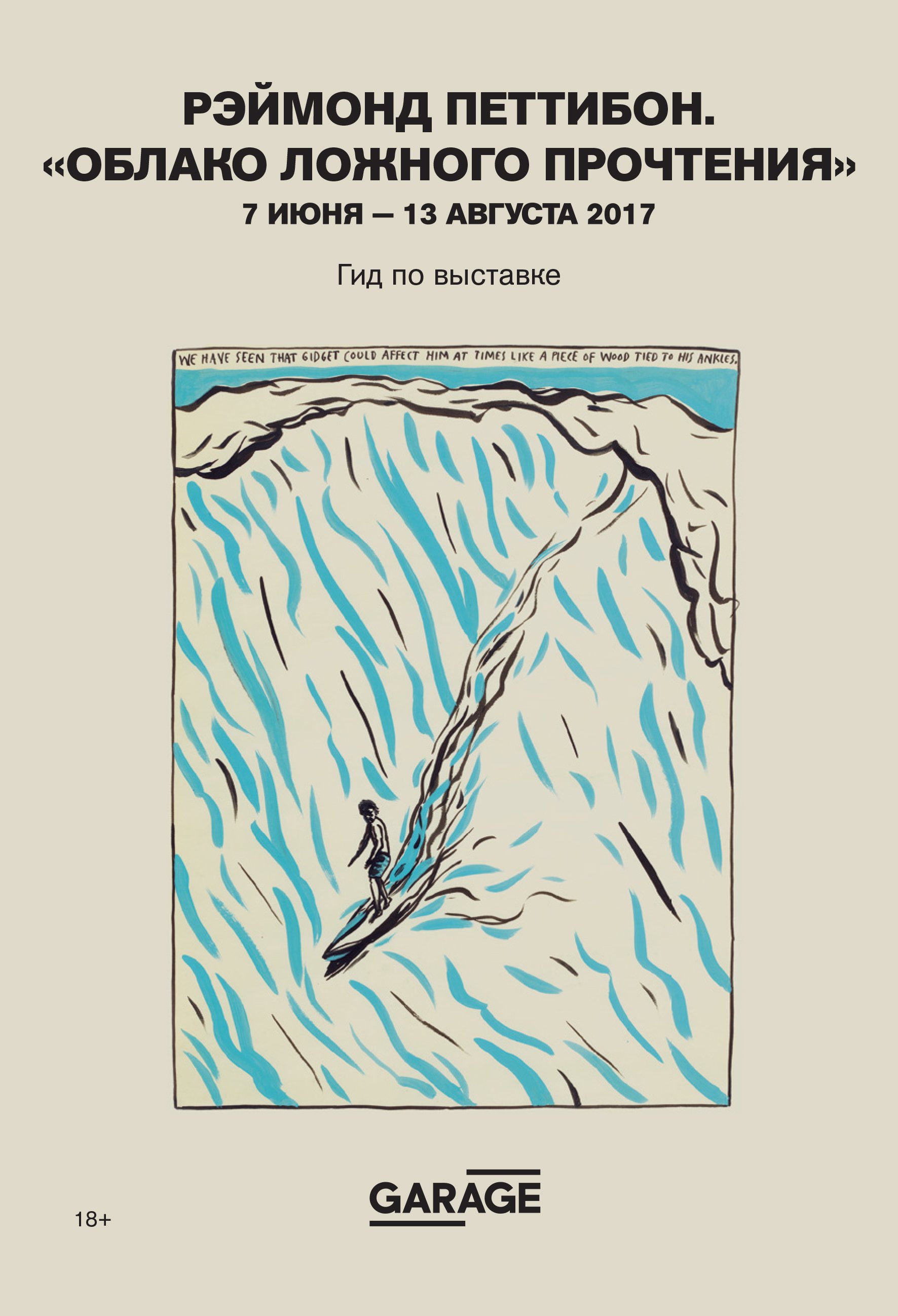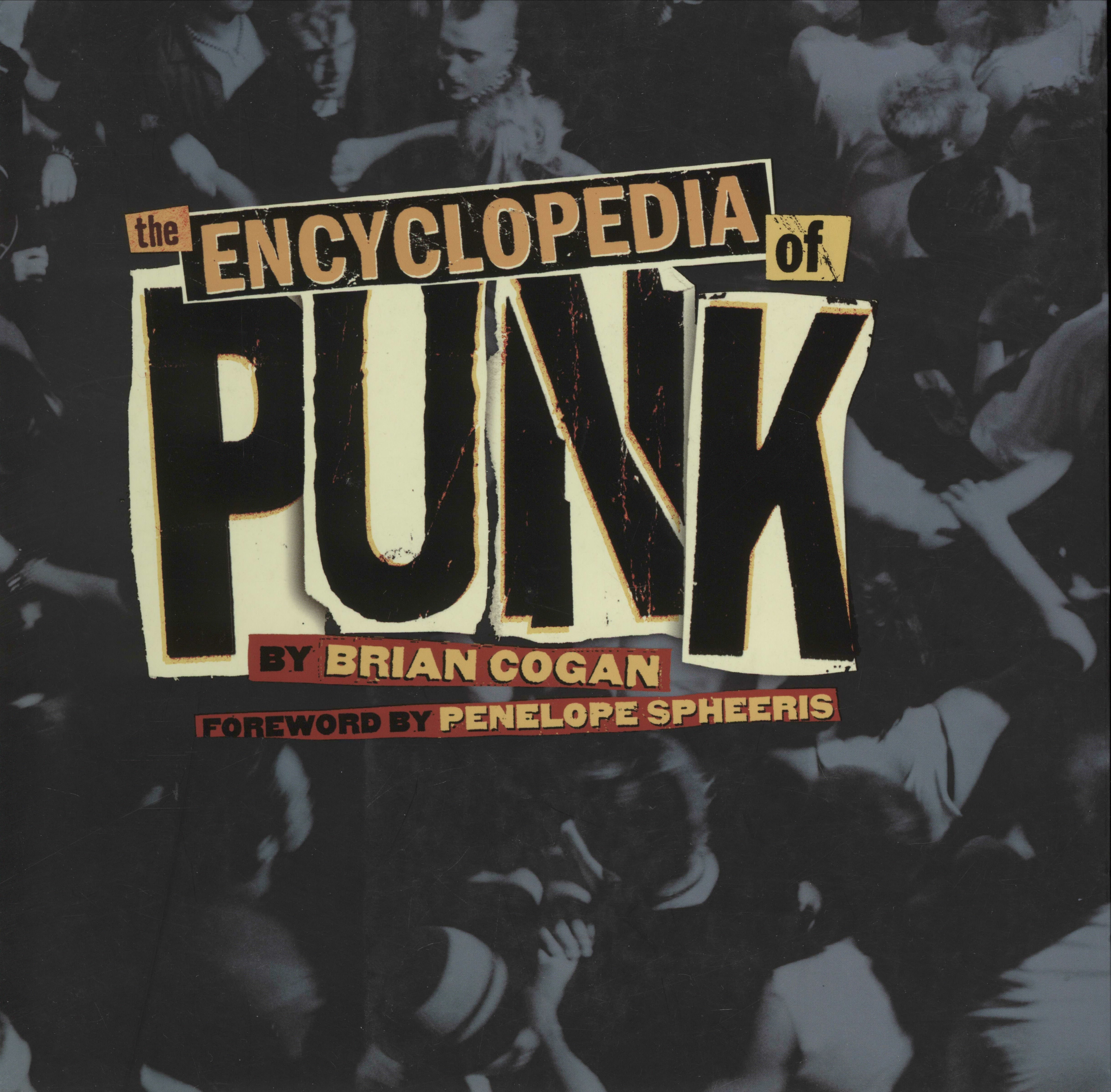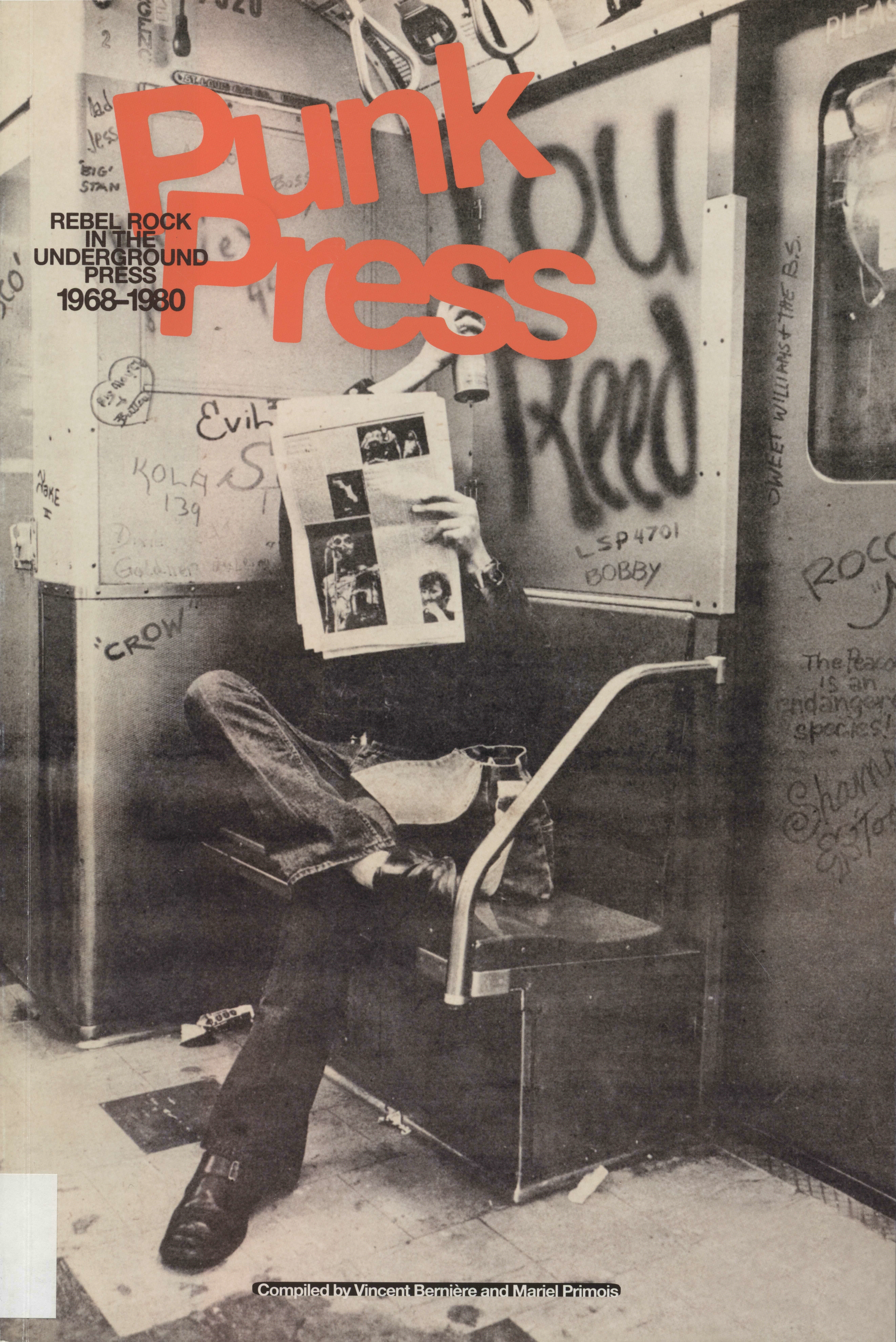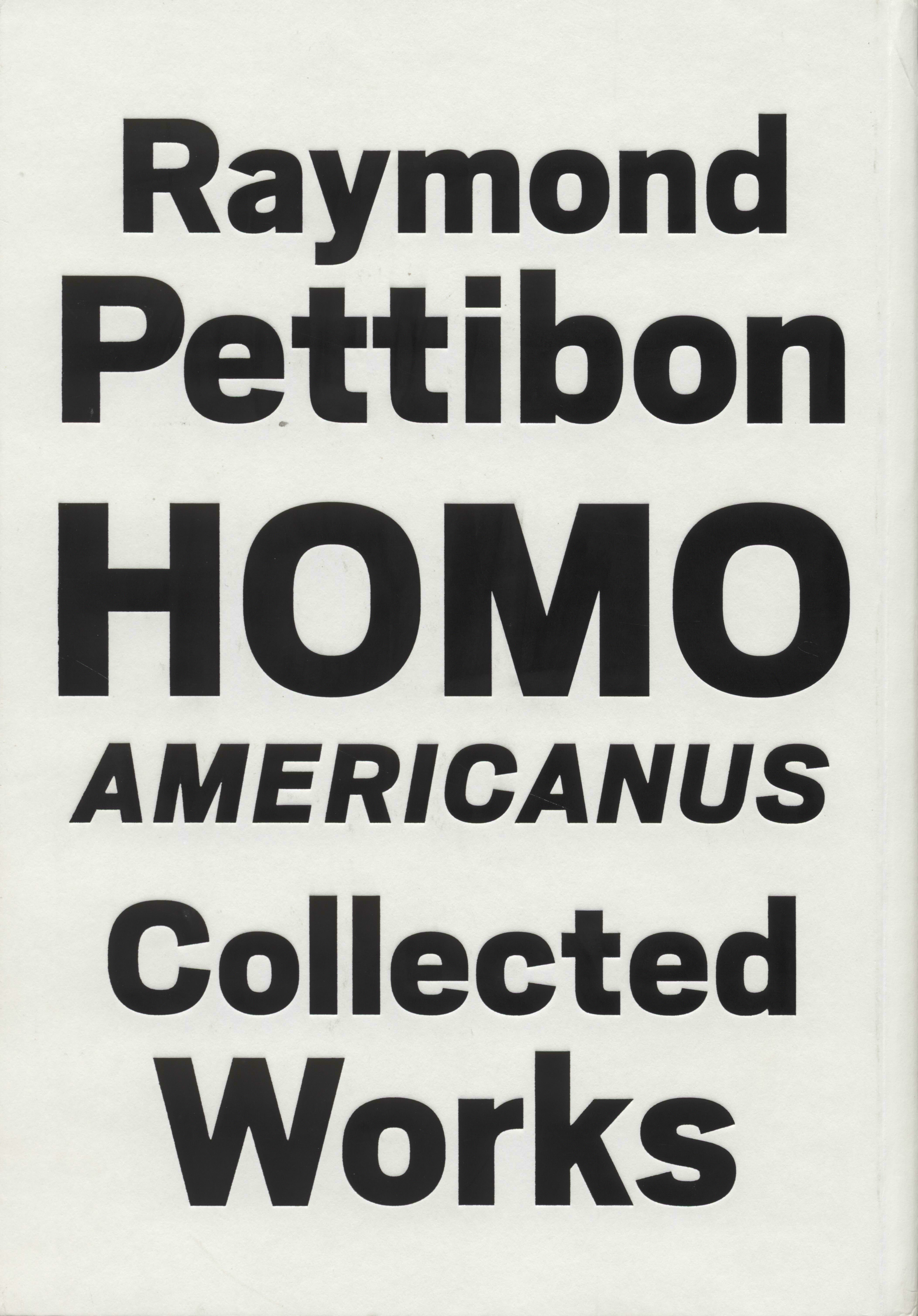The Raymond Pettibon exhibition The Cloud of Misreading is on at Garage until August 13. Garage Research has prepared a selection of books on the artist and punk culture, essential for getting a closer insight into his practice.
Books on Raymond Pettibon
The selection was prepared by Valery Ledenev, Anastasia Tishunina, Maria Shmatko and Yuri Yurkin

Raymond Pettibon. The Cloud of Misreading. Exhibition guide
Garage Museum of Contemporary Art, 2017
Garage has prepared an illustrated guide to The Cloud of Misreading that includes texts, found in nearly every single work by the artist, translated to Russian by writer Kirill Medvedev. It is not an easy task to ‘decipher’ some of the artist’s pieces: he is famous not only for his recognizable graphic style, but also for non-linear approach to textual material. Pettibon engages with a variety of sources: from literature to mass media. The artist never makes direct citations, but rather processes texts through his individual perspective, making it a rather complicated task for a viewer to navigate through this sort of intertextuality. ‘Situating the work of Raymond Pettibon historically or theoretically poses almost insurmountable problems, given the infinite variety of references that constitute the iconography and citational textuality of his oeuvre,’—notes Benjamin Buchloh in his essay published in a catalogue for the artist’s retrospective A Pen of All Work, held at the New Museum in New York (further mentioned below). All in all, we can recommend checking the guide. V.L.

The Encyclopedia of Punk
Sterling Publishing, 2010
This extensive encyclopedic title can be recommended to anyone interested in what is ‘punk’ and why is it of interest. The key block of information in the book comprises biographical entries on heroes of punk scene—from legendary bands, like ‘The Ramones’, ‘Sex Pistols’ and ‘Black Flag’ (Pettibon’s elder brother was a part of the latter, the artist created album covers for them) to lesser-known music collectives. Biographies are featured alongside articles on musical origins of punk and cultural-historical context on the moment of its birth. A whole spread is devoted to Raymond Pettibon and his contribution to punk cover-art design. In the encyclopedia’s supplement you can find timelines, showing the key dates in punk history, mentions of the most important TV-features on punk, top-ten compilations of all kinds ('ten most politically active bands', 'ten best drummers', 'ten shortest songs in the genre') and a ranking of the hundred best and must-listen punk albums. The book includes many illustrations, including reproductions of album covers, portraits, and concert photos, making it a well-deserved tribute to the vivid and provocative subculture. A.T.

Punk Press: Rebel Rock in the Underground Press 1968–1980
Harry N. Abrams, Inc., Publishers, 2012
This panoramic title is also devoted to punk culture, born in the 1960s, however, it is not all about the musical component to punk, a large part is devoted to phenomenon of zines—amateur small-circulation magazines, published by fans of various phenomena in culture. Pettibon himself is known for producing zines, some of them are included in the exhibition at Garage. John Savage, music journalist, author of the opening article for Punk Press, writes on the pleasures of creating zines: ‘What I loved about fanzines was that the opportunity was there to do anything you wanted. There were no constrictions of budget, imagined readership, focus group, CEOs dictating editorial policy. Whatever was on your mind, you could just do it. A magazine of pure graphics with no words? Great! Articles about the situationists? Bring it on!’ The book features many zine reviews, published from 1968 to 1980. In time, some of them grew into wide-circulation periodicals, yet the majority remained fan-art compilations, made by their authors mainly for the sake of their own pleasure. Punk Press is an excellent study of punk culture’s visual component, as well as music journalism in general: apart from zines, it includes many graphic novels, facsimiles of magazine articles on punk, interviews with artists, and concert photos. A.T.

Raymond Pettibon. Homo Americanus. Collected Works
David Zwirner Books, 2016
Disregarding the publisher’s synopsis, the book Homo Americanus is not just a catalogue for the exhibition of the same name, that took place at Museum der Moderne Salzburg. It is an extensive monograph, prepared by the artist himself. Thirty-two chapters of the book include graphic works of Raymond Pettibon spanning from 1970, all accompanied by the artist’s own commentary, taken from an interview with the curator Ulrich Loock. These sudden textual remarks appear as literary support to the visual kaleidoscope, not interrupting, but rather contributing to the overall artistic text of the catalogue. Incorporating text into graphic works, according to Pettibon, allows him to ‘сompress stories into single pictures’. The book doesn’t seek to present another overview of Pettibon’s practice, but create a detailed account on the metamorphoses of leitmotifs in his art, such as trains, surfing, religions, erotics, solitude, baseball, presidents, rock stars, and many others. Not leaving any spare space even inside viewer’s imagination, Pettibon’s ‘drawings-in-themselves’ are elevated to the status of witness accounts for the artist’s existence, documentation of his life, fears, humor, news, favorite books and songs. Even if in this book we are dealing with the artist’s mythology, at least we can recognize the artist inside it. As he himself has confessed ‘to be entirely selfless is an attempt that I think fails’. M.S.

Raymond Pettibon. A Pen of All Work
Phaidon, 2017
Another major exhibition of Raymond Pettibon took place last spring in the New Museum in New York. The American show, titled A Pen of All Work— like the current show in Moscow—was prepared by Massimiliano Gioni and Gary Carrion-Murayari. Some of the works seen at the New York exhibition can now be found at Garage. The catalogue for A Pen of All Work includes everything a publication of its type needs: articles by critics (such as Benjamin Buchloh), the curator’s interview with the artist and, of course, the images. According to the New Museum’s director Lisa Phillips, Raymond Pettibon is ‘a good candidate to be one of those one-person museums’. In fact, this publication, in a way, is a museum itself—however, a printed museum,—that provides a very detailed account on the expressive practice of the artist. Y.Y.
